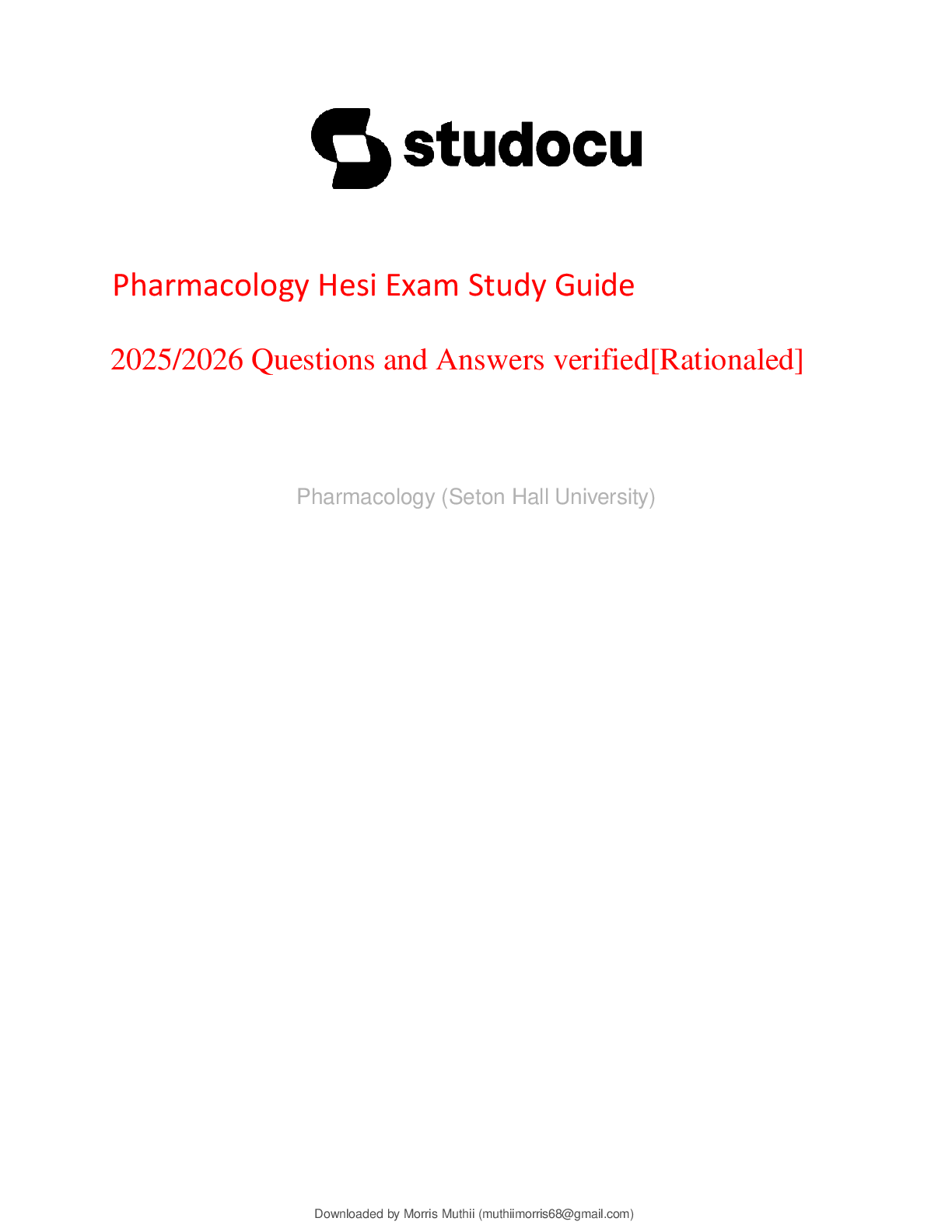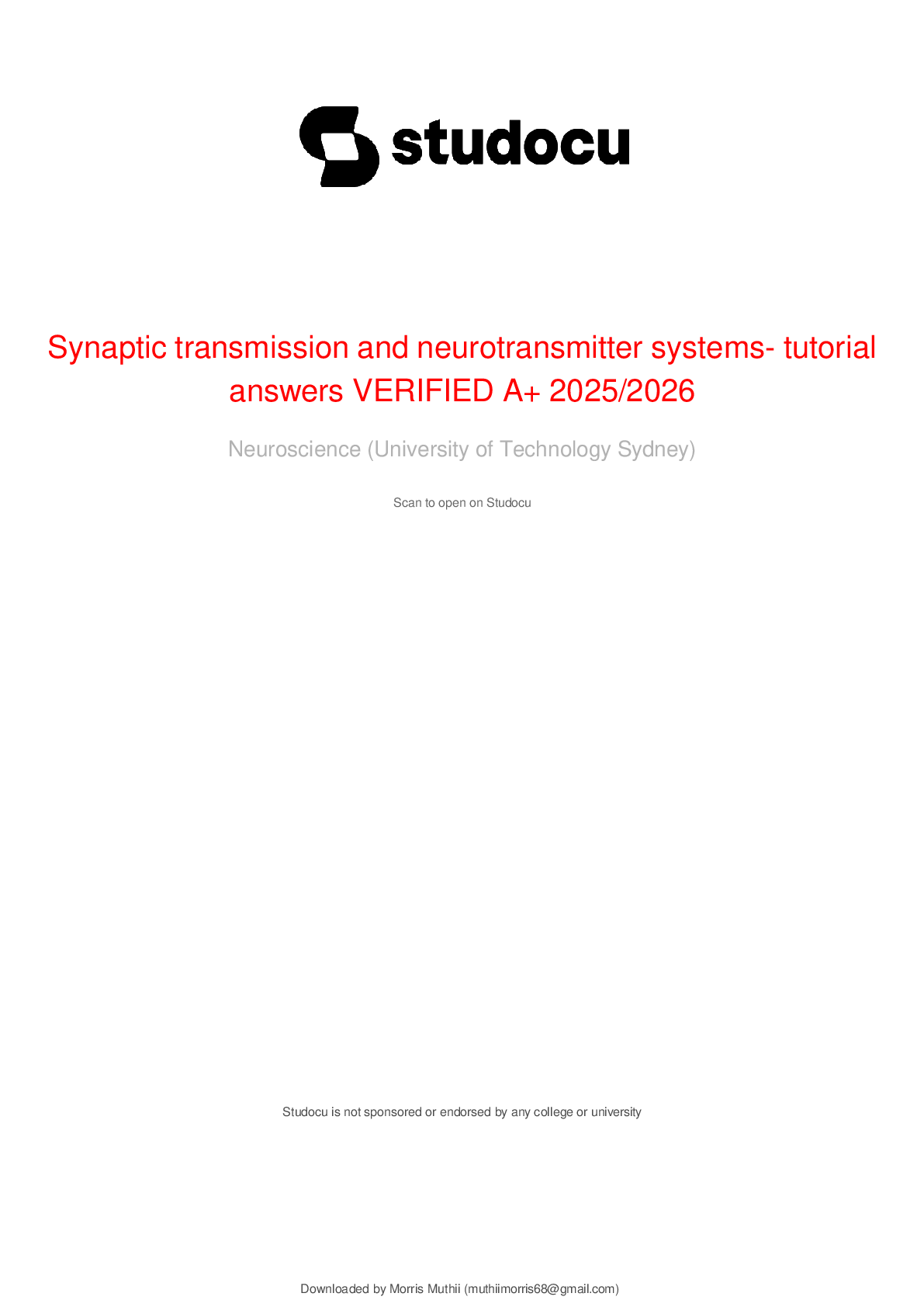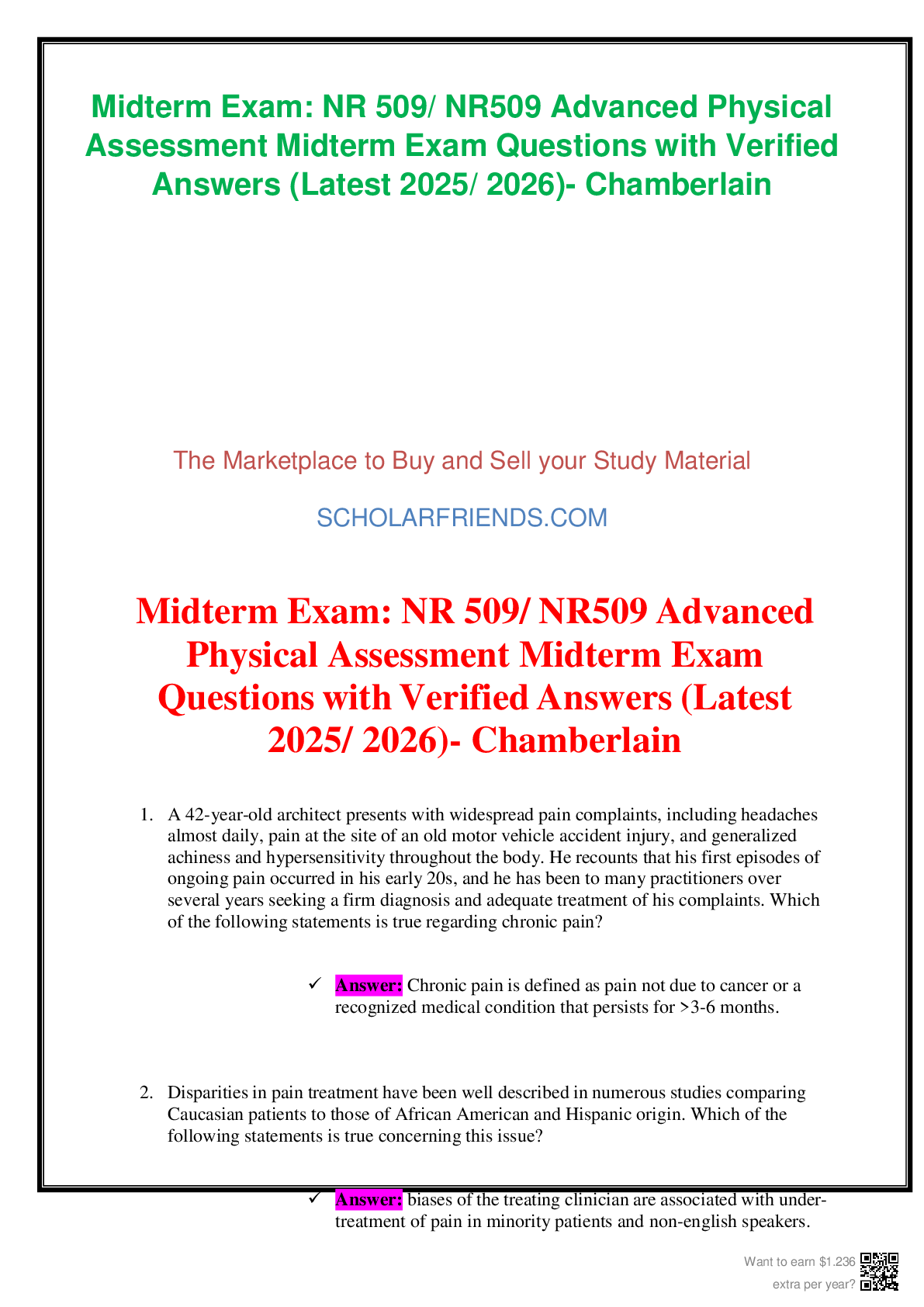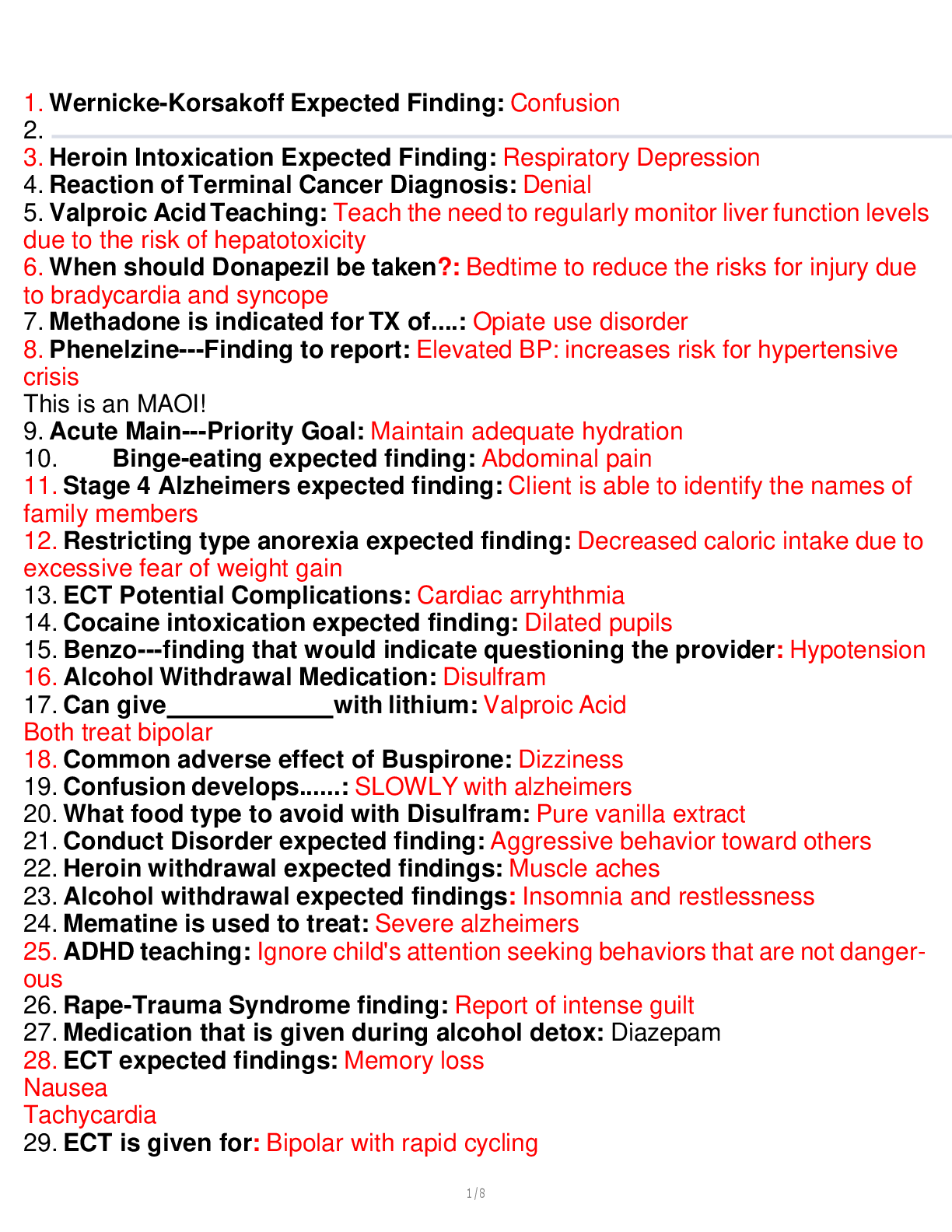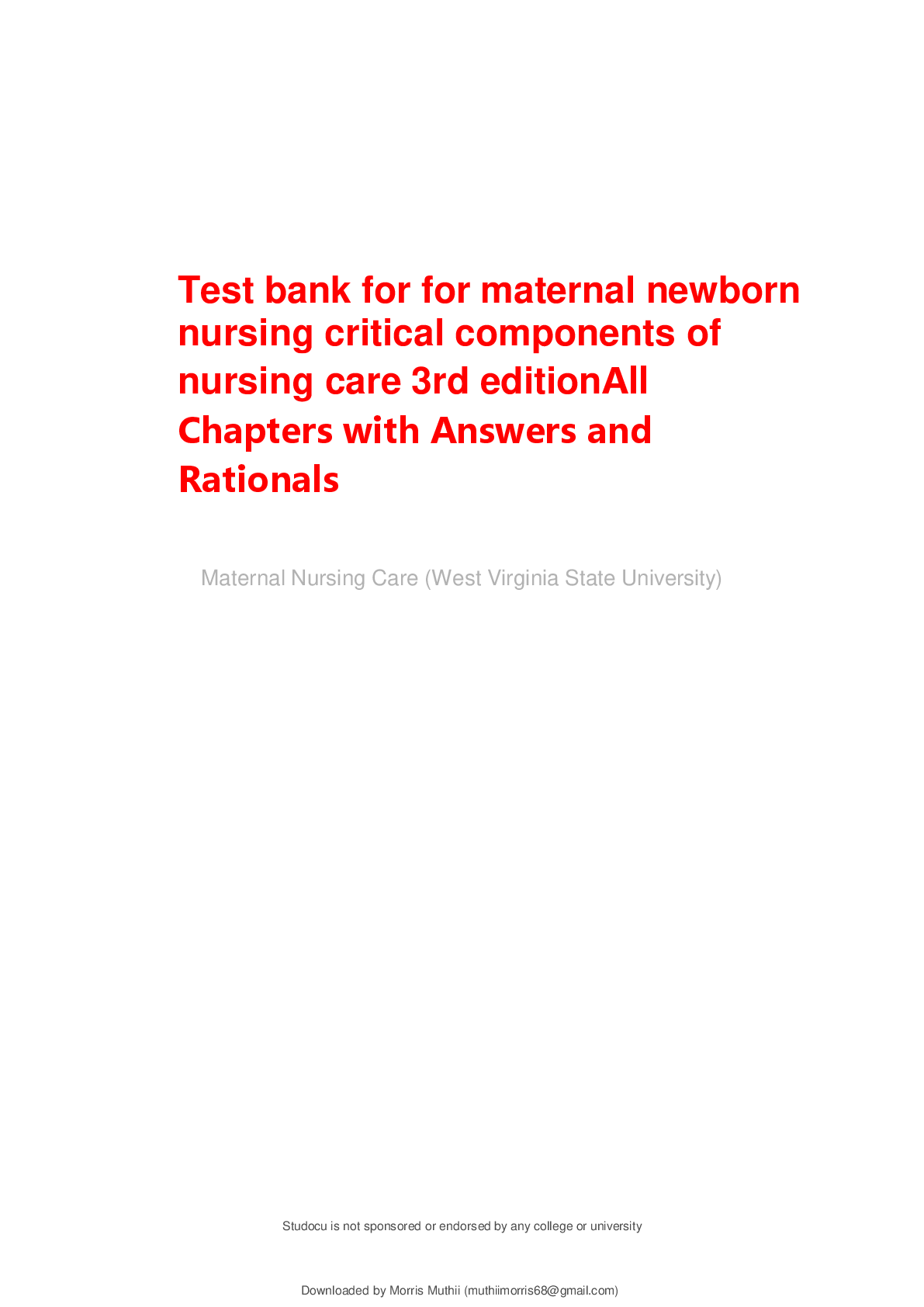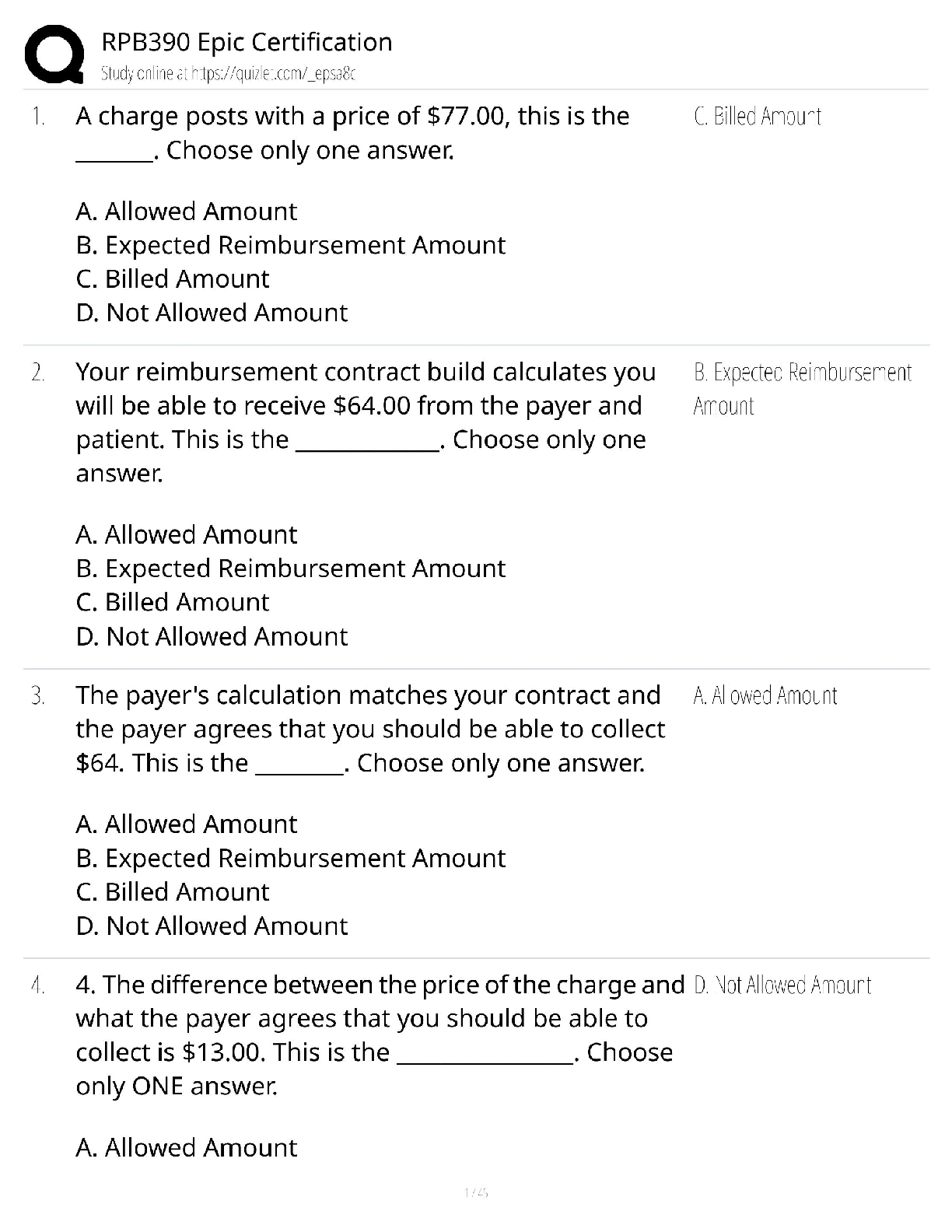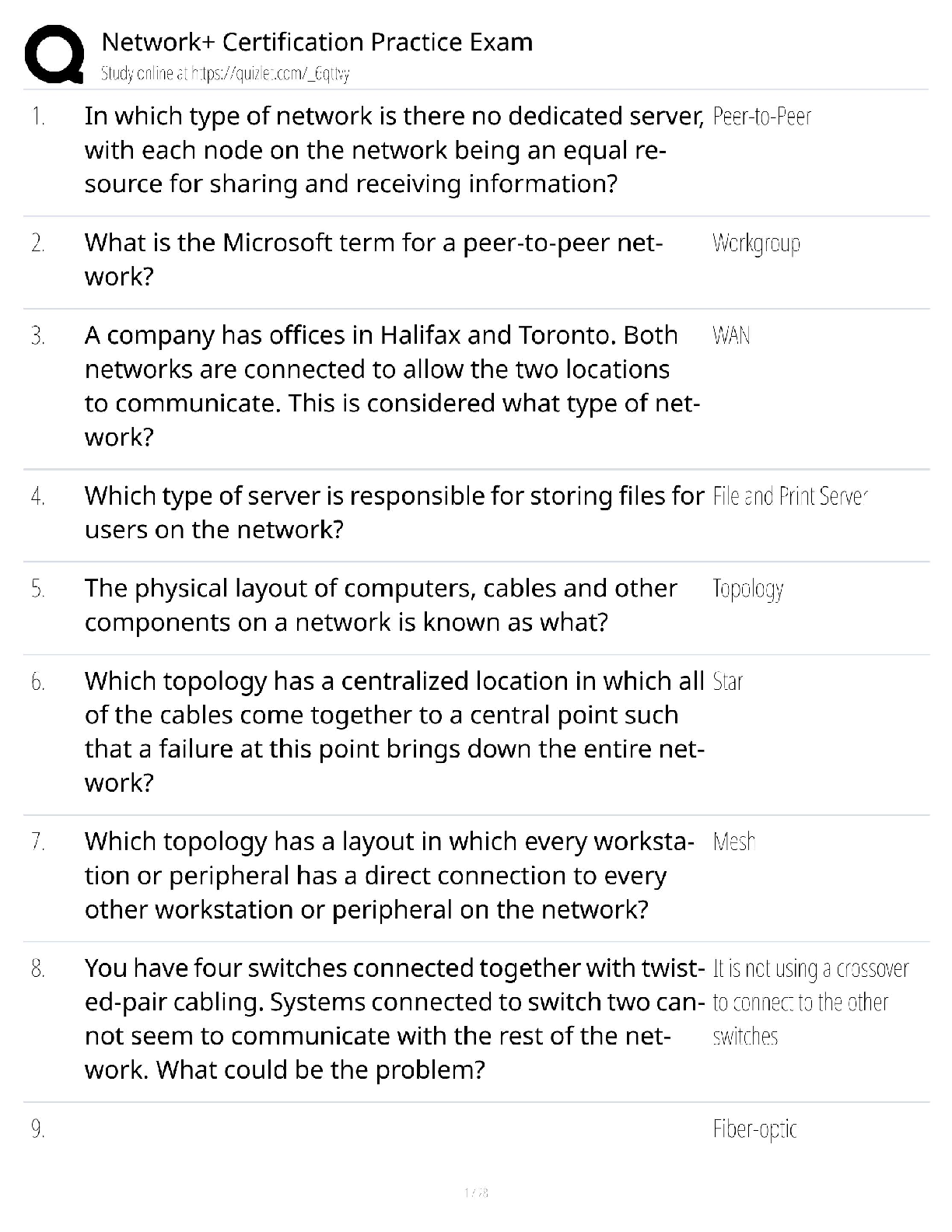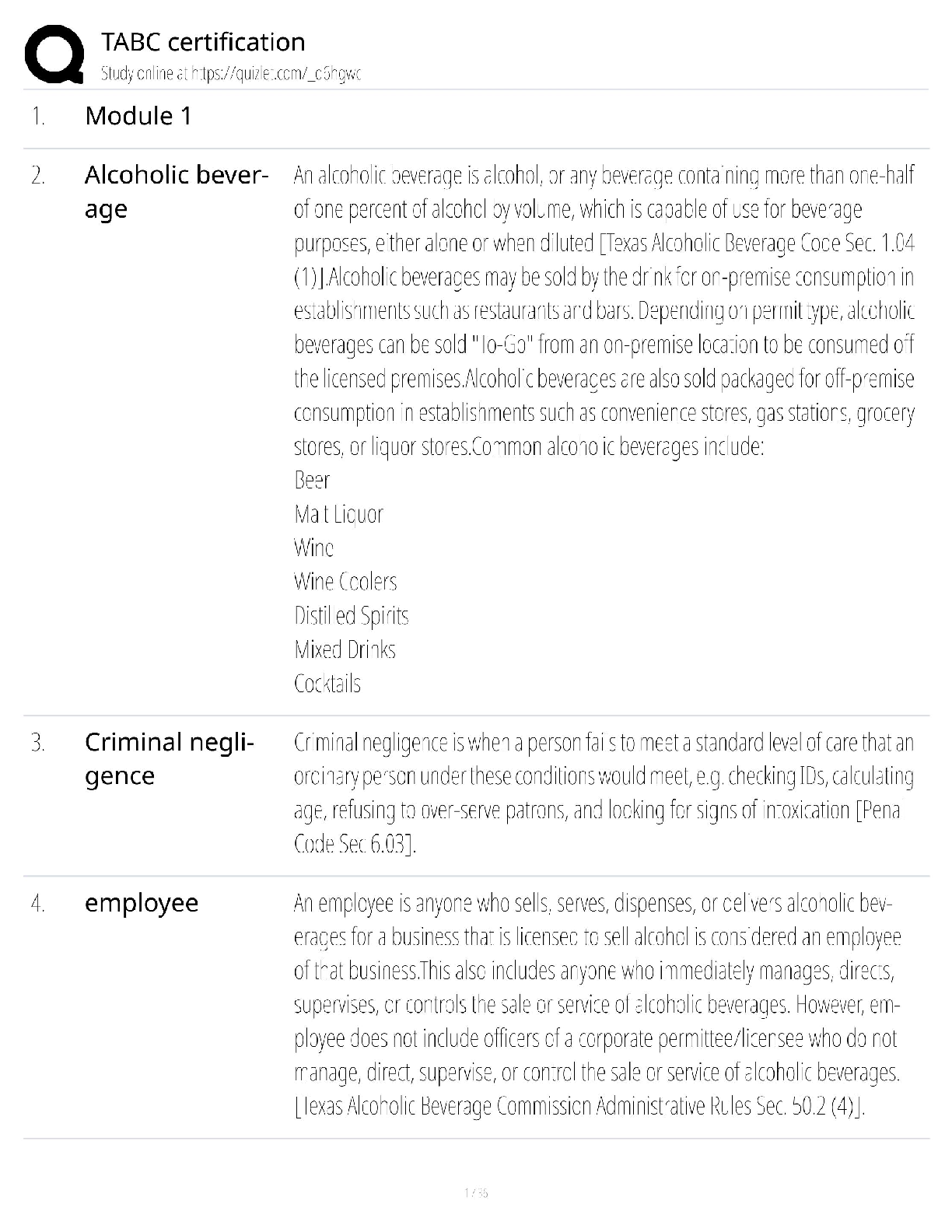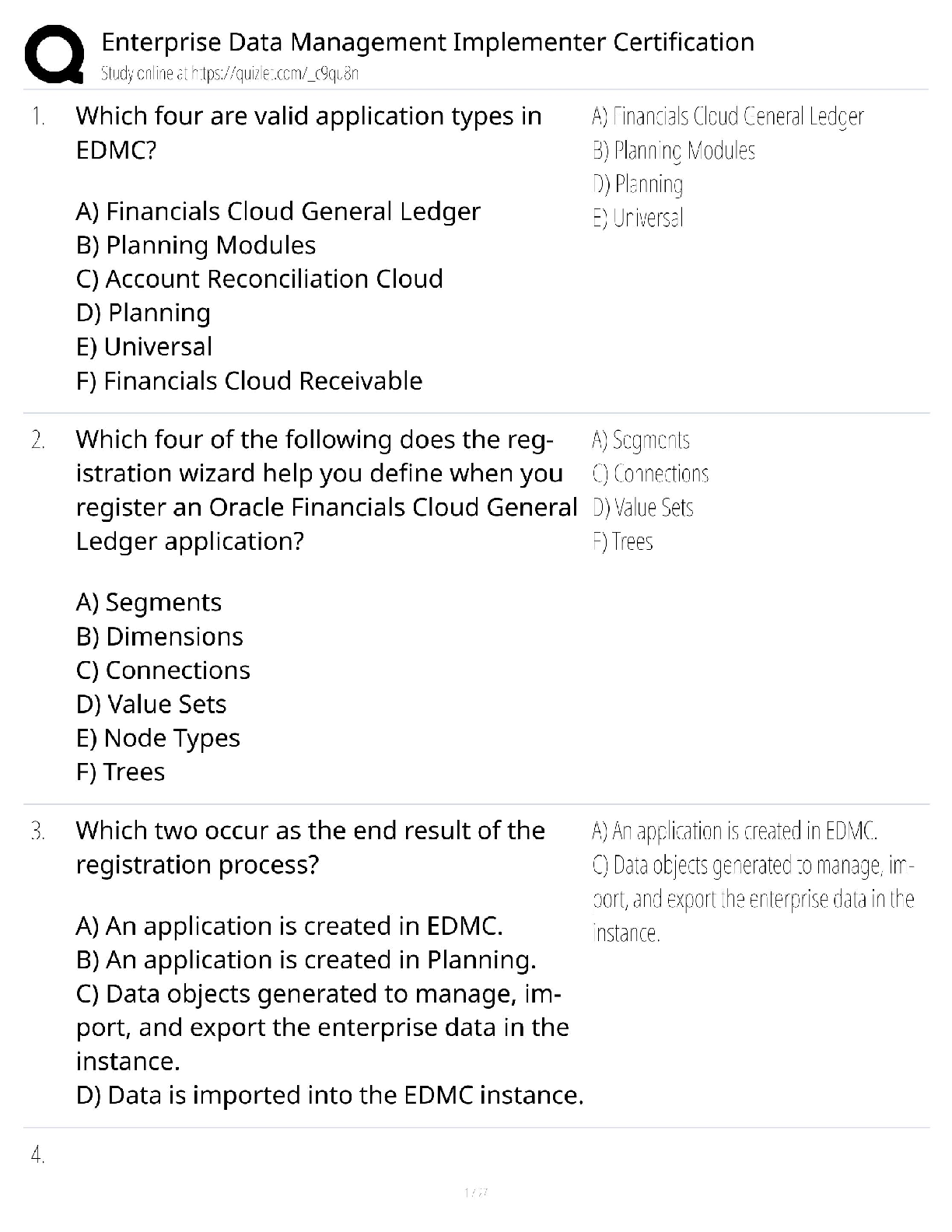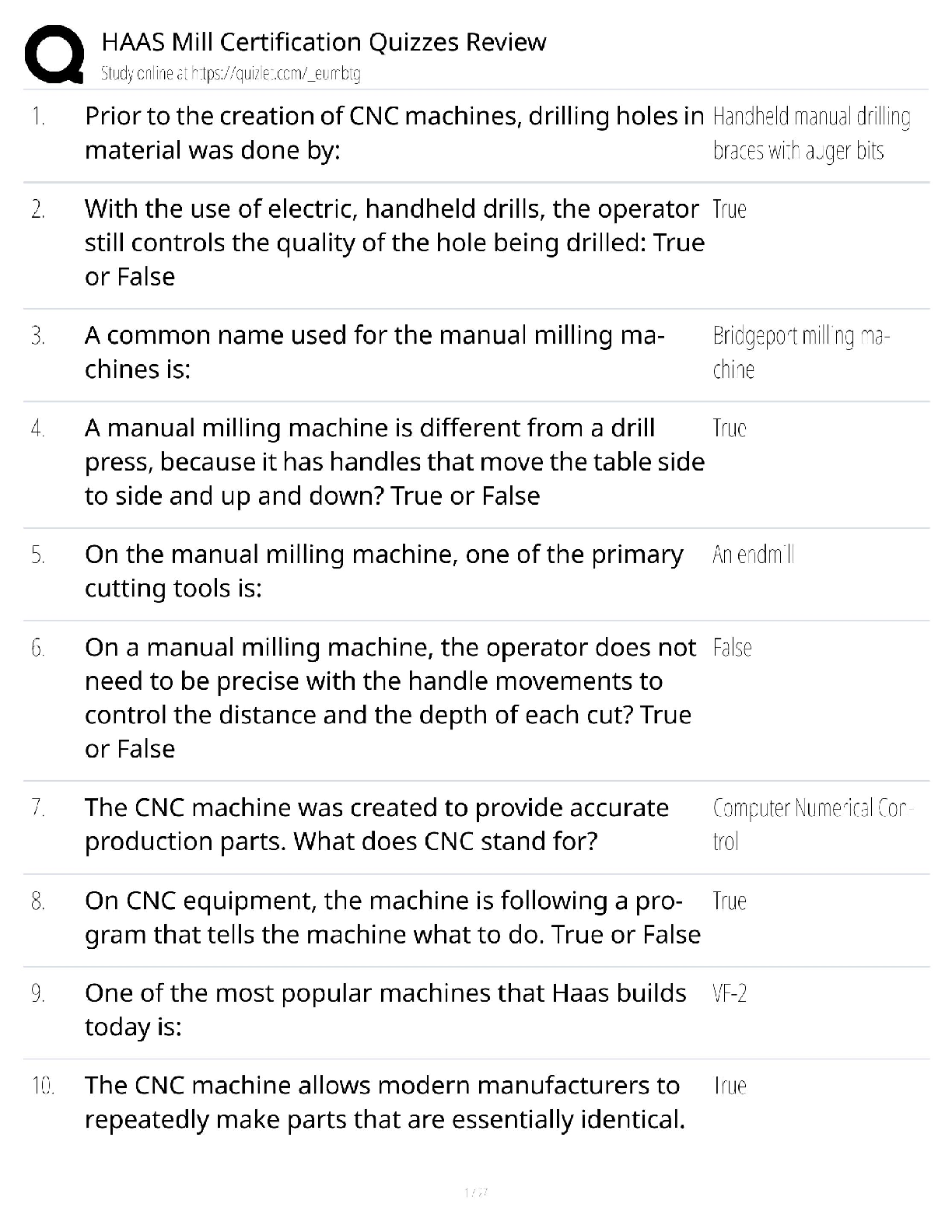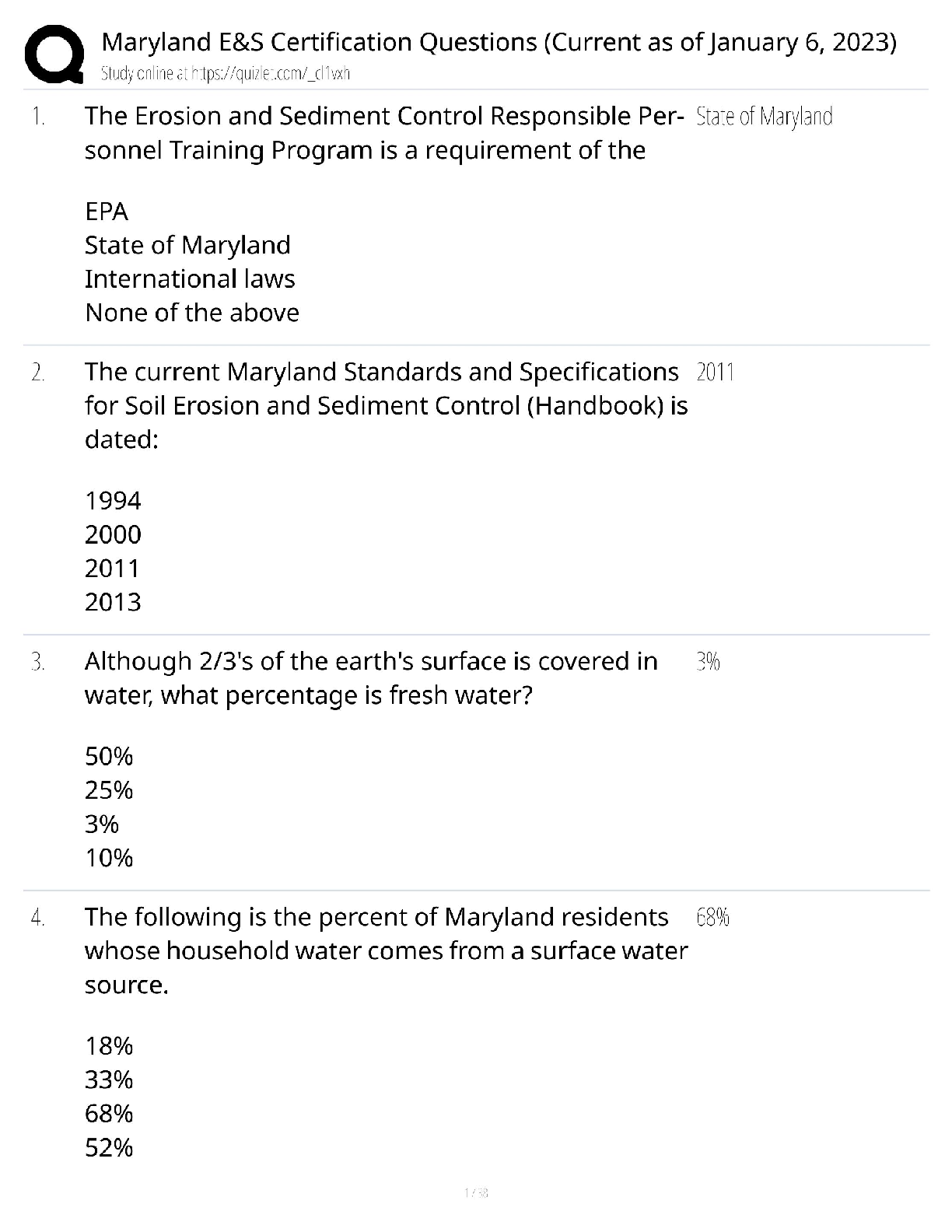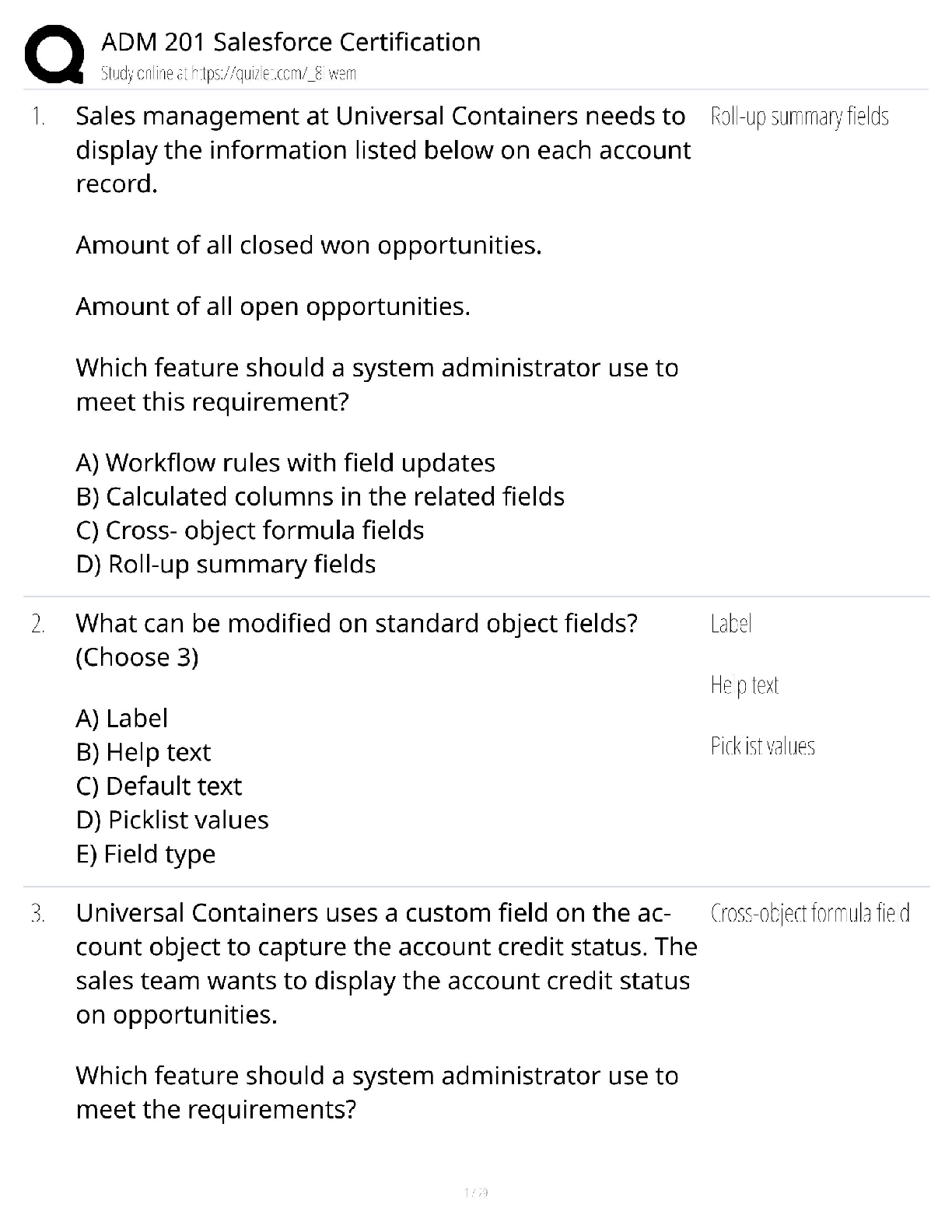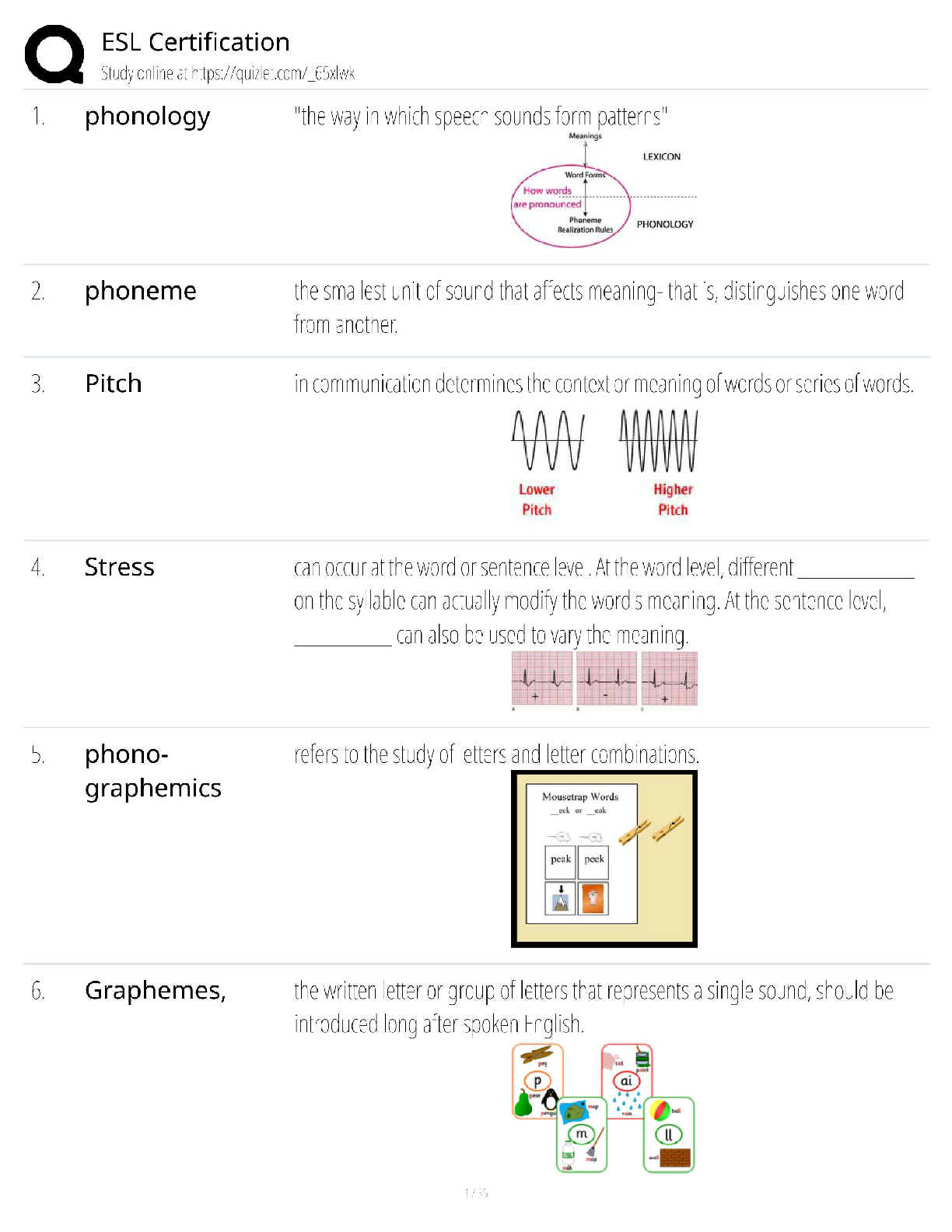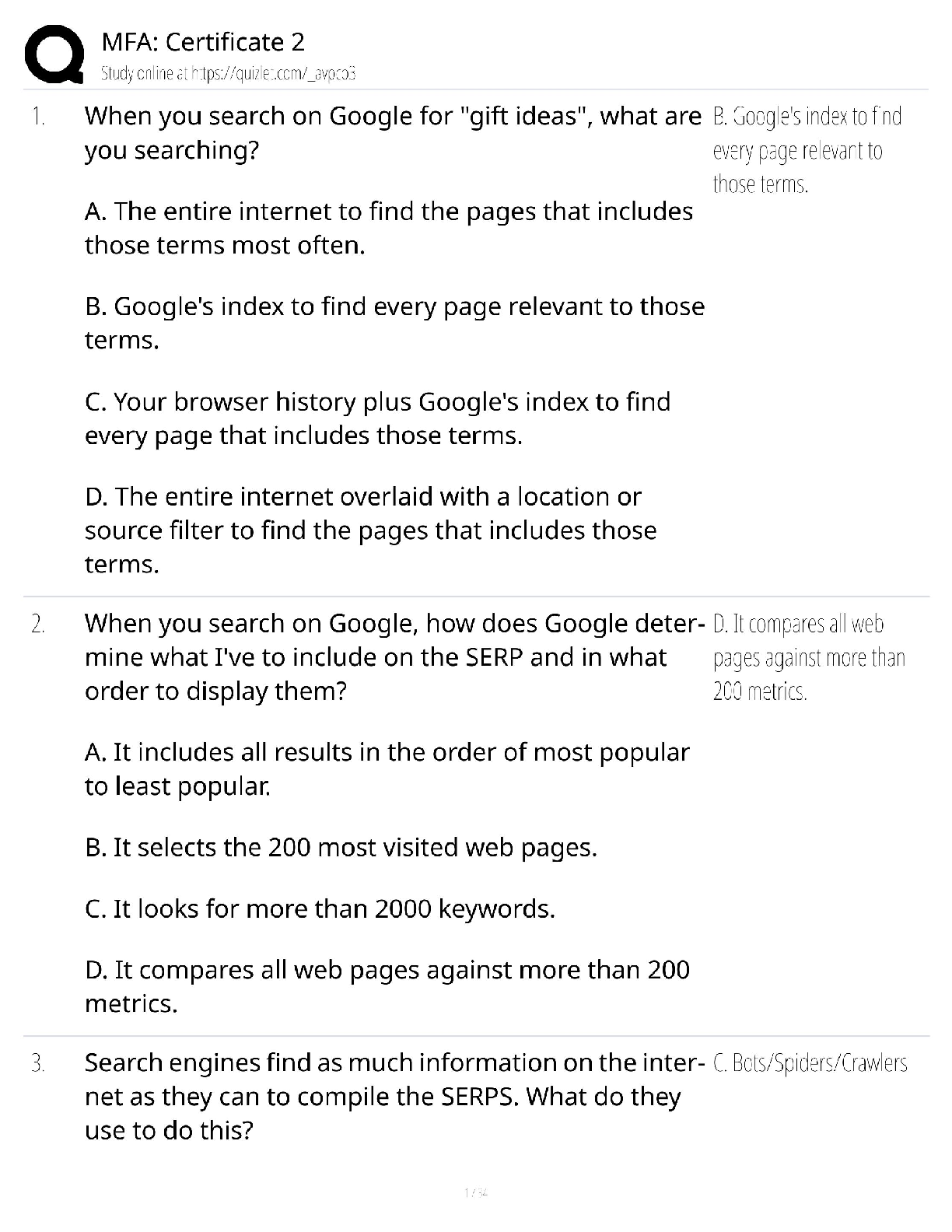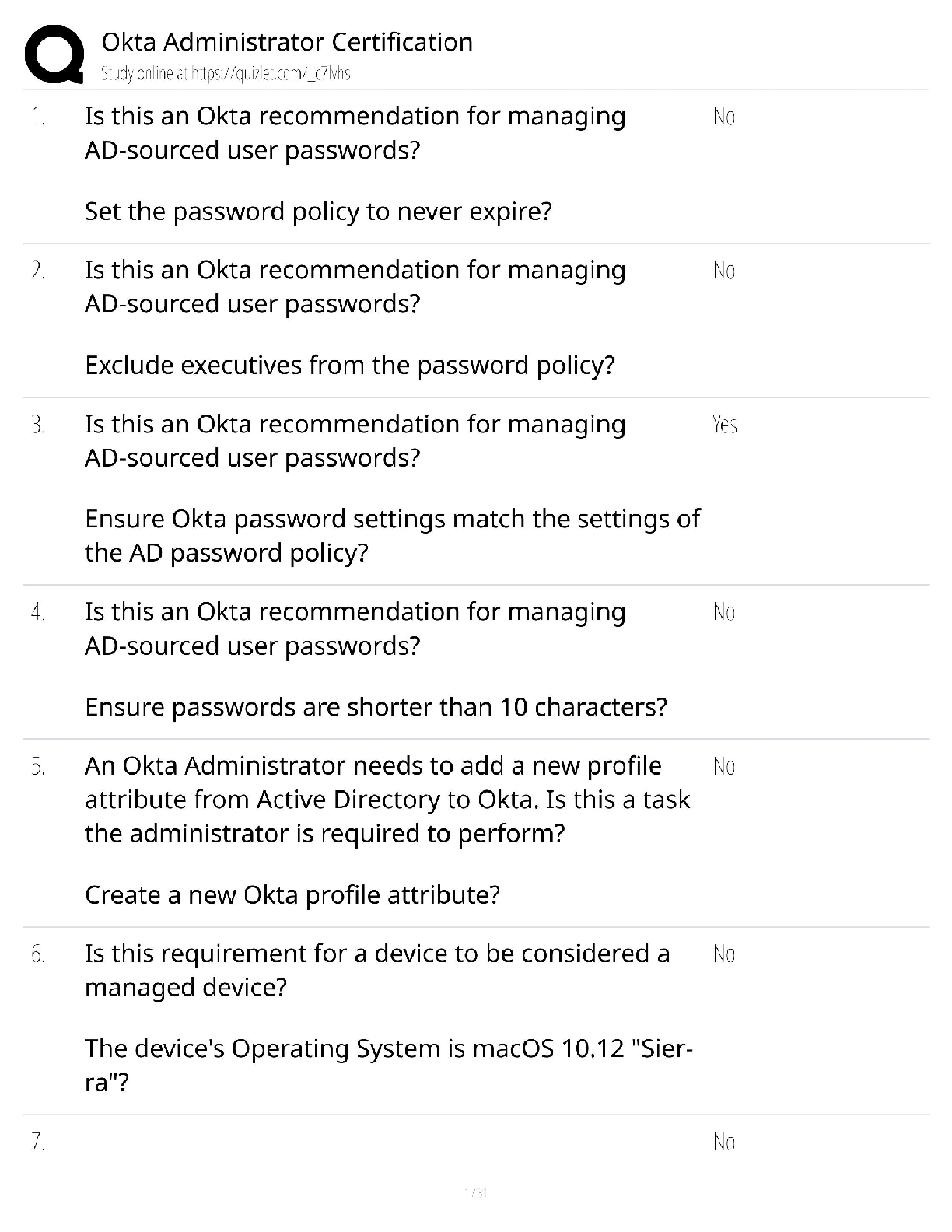Neuroscience > QUESTIONS & ANSWERS > Synaptic transmission and neurotransmitter systems- tutorial answers VERIFIED A+ 2025/2026 Neuroscie (All)
Synaptic transmission and neurotransmitter systems- tutorial answers VERIFIED A+ 2025/2026 Neuroscience (University of Technology Sydney)
Document Content and Description Below
Tutorial SYNAPTIC TRANMISSIONS AND NEUROTRANSMITTER SYSTEMS Here is an opportunity to check your knowledge of what was covered in the lectures. Before you immediately work out the answer using you ... r lecture notes, treat the questions like a test. 1. What is the principal way(s) that signals are transmitted between neurons in the adult human nervous system? a. Ions are released into the synaptic cleft between adjacent cells and diffuse across to the post synaptic membrane b. The cells are fused in a network and the electrical impulse travels along the plasma membranes of the cells c. There is a discharge of electricity from the pre-synaptic cell that induces a massive change in the permeability of the post-synaptic membrane d. Chemicals are released into the synaptic cleft and bind to their specific receptors on the post-synaptic membrane e. b and d are both used extensively in the adult human nervous system 2. In the space provided make a simple line drawing of the principal features of a synapse between two neurons 3. Which statement is the MOST CORRECT about neurotransmitters? a. They are synthesised by the presynaptic neuron in response to the generation of an action potential b. Stores of neurotransmitter are located in the axonal terminal c. Some are synthesised in the Golgi bodies in the soma of the neuron d. All types of neurotransmitters are stored in secretory granules e. With the exception of the amino acid neurotransmitters, all other neurotransmitters are synthesised in glia and exported to neurons for storage 4. Which statement is the MOST CORRECT about neurotransmitter release? a. The action potential induces the opening of voltage-gated neurotransmitter channels for neurotransmitter release b. The action potential induces closing of potassium channels which triggers neurotransmitter exocytosis c. Localised decreases in the intracellular sodium level induce neurotransmitter release d. The action potential stimulates release of neurotransmitter-containing vesicles from the Golgi e. Localised increases in the intracellular calcium level induce neurotransmitter release 5. How do neurotransmitters exert their effect on their target cell? a. By binding to specific proteins located in plasma membrane of the target cell b. They enter the cell via specific channels and alter the activity of cellular enzymes c. By forming sodium channels in the plasma membrane of the target cell and thus inducing membrane depolarisation d. By forming chloride channels in the plasma membrane of the target cell and thus inducing membrane hyperpolarisation e. Both c and d occur depending on the actual neurotransmitter 1 6. What is the principal process involved in terminating the signal at the synapse? a. High levels of the neurotransmitter releases by the post-synaptic cell have a negative feedback effect on pre-synaptic neurotransmitter release b. Reduced concentrations of neurotransmitter in the synaptic cleft c. Endocytosis of the post-synaptic receptor induced by neurotransmitter binding d. The repolarisation of the presynaptic neuron e. none of the above 7. For which of the following neurotransmitters is degradation in the synaptic cleft the principal means by which its effects are terminated? a. acetylase b. acetylcholine c. dopamine d. monoamine oxidase e. both a and d 8. Which of the following neurotransmitters are synthesised from amino acids? a. serotonin b. noradrenalin c. glycine d. a and b are both synthesised from amino acids e. a, b and c are all synthesised from amino acids 9. When glycine binds to its post-synaptic, ligand-gated receptor. Which of the following will occur in the post-synaptic cell? a. Membrane permeability to calcium will increase b. Membrane permeability to chlorine will decrease c. Membrane permeability to GABA will increase d. Membrane permeability to chlorine will increase e. The cell will be come depolarised 10. Activation of the nicotinic acetylcholine receptor means that the post-synaptic neuron is: a. most likely to in turn release an inhibitory neurotransmitter like GABA b. most likely to in turn release noradrenaline c. most likely to be resistant to the generation of an action potential d. most likely to be more responsive to the generation of an action potential e. exocytose calcium 11. Which of the following ARE NOT examples of transmitter-gated channels? a. nicotinic acetylcholine receptors b. AMPA-gated channels c. metabotropic glutamate receptors d. NMDA-gated channels [Show More]
Last updated: 8 months ago
Preview 3 out of 8 pages

Loading document previews ...
Buy this document to get the full access instantly
Instant Download Access after purchase
Buy NowInstant download
We Accept:

Reviews( 0 )
$14.50
Can't find what you want? Try our AI powered Search
Document information
Connected school, study & course
About the document
Uploaded On
Mar 19, 2025
Number of pages
8
Written in
All
Additional information
This document has been written for:
Uploaded
Mar 19, 2025
Downloads
0
Views
41

